panel

Gallery Spaces Panel I: Unlocking the power of digital art and emerging technologies to radically disrupt the art market
How will we value art in the future? To guide our discussion, we will look at the two major trends affecting the art market currently. First, the high end art market has a reputation of being notoriously conservative and lacking parity. Yet increasingly diverse and empowered artists and consumers are heralding a radical market shift that is about to transform the art world. Second, rapidly evolving digital technologies offer unprecedented creative opportunities for artists and the simultaneous promise of decentralized infrastructure is radically disrupting strongly held ideas of art ownership and collection. How will this emerging mega trend of art tech affect the role and value of art in the future?
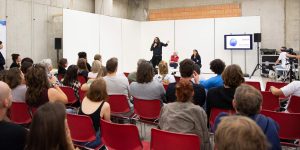
Gallery Spaces Panels
At the Gallery Space Panels 2019, experts will discuss the transformation and future of the media art market. The interaction between science, art and the market will be analysed from a variety of perspectives in seven prominent discussion rounds.

Gallery Spaces Panel VII: Digital art going mainstream?
With the history of digital art commencing in the 1960s to current immersive digital art installations, (meow wolf, artechouse Team Lab or GAN) generating an immense following quickly and quoted as commercially successfully - did digital art become mainstream? Marketplaces for native digital art mushroom in a battle for creators advertising a new way of experiencing, collecting and showing art. The conversation will try to unfold what artistic production of digital art means for the artists themselves, museums and collectors with regard to exhibition making, collecting and archiving.
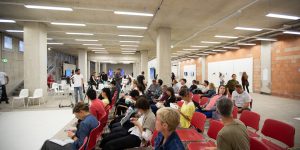
Gallery Spaces Panel VI: Paradoxes and obstacles in maintaining and staging alive biomedia art
This panel with prominent protagonists involved in the field of biomedia art discusses the unprecedented challenges to stage, transport, conserve and collect art that appropriates and subverts the most diverse technologies of the life sciences. The shift from organic representation or simulation to actual biological manipulation results in technical, institutional, regulatory, legal, ethical, bureaucratic, philosophical and aesthetical issues with regards to museum infrastructures, the status of living organisms, tissues and GMOs, and their fragility when maintaining, conserving, re-enacting or shipping them. Such works at the threshold of microperformativity and necropolitics face undesired bacterial deterioration and contamination, and cultural institutions and collectors are still ill-equipped to deal with the subsequent issues.
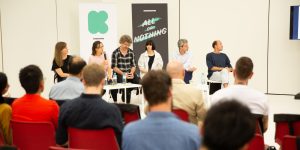
Gallery Spaces Panel V: Artists & scientists – Exploring new forms of collaboration (Scientist in Residence Program)
Just as artists today are increasingly interested in science and technology, scientists and technologists are turning to the arts as a source of new perspectives and tools for communication. This trend requires new initiatives to establish better links between the worlds of art and science, as well as between cultural and research institutions. Through its Art&D labs, Gluon supports artist residencies in laboratories of companies, research institutes and universities. Through its Scientists in Residence programme, it encourages artists to open their studios to scientists and technologists. On the basis of their experiences in these programmes, the scientists of this panel will reflect on the following questions: To what extent can these interdisciplinary collaborations stimulate innovative ideas and projects of social relevance? What challenges do scientists have to face in working together with artists? And how can organizations help them achieve meaningful exchanges?

Gallery Spaces Panel IV: Interdisciplinary Art – how becoming established?
The art market refers to the process of art distribution and sales. Museums, galleries, collectors, curators, critics are part of the active market participants influencing the dynamics. Artists to choose interdisciplinary approaches are in need of resources, display and active discourse with all industry participants to increase awareness, understanding and appreciation for interdisciplinary work. What is needed of all industry participants to propel interdisciplinary work to a representation established level? Art and science continuously discover common questions and modes of operation, resulting however in fundamental different outcomes. These differences create friction and great space for collaborations between disciplines.
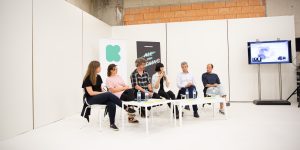
Gallery Spaces Panel III: The Potential and Limitations of the Media Art Market
The media art market is constantly changing and gradually becoming more diverse through new players such as auction houses, mega galleries, and experimental galleries. What is the progression of the art and technology market? What are the emerging trends for this market? This panel will broaden people’s understanding of the media art market and collecting as well as raise questions about not only their potential but also their limitations through a conversation between artists, collectors, gallerists, and curators.
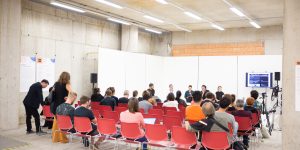
Gallery Spaces Panel II: Art & Science for Ecology
Since its creation, Quo Artis has developed a series of projects at different magnitudes that aim to reflect on our climate urgency and ecology. Among them, Artists&Scientists expedition to Antarctica in 2017 and to Galápagos Islands, scheduled for 2020. In this context and within the framework of Ars Electronica, Quo Artis presents the exhibition: “Postnature. The Future is Present” curated by Daniel López del Rincón and displaying works from the following artists: Brandon BALLENGÉE (US), Joaquín FARGAS (AR), Maja SMREKAR (SI) and the QUIMERA ROSA collective (+ Roger Rabbitch + Rebeca Paz) (ES) where they investigate the relationship between future, nature and the Anthropocene. The round table presents itself as an opportunity to put into context the works of the exhibition, while seeking to contemplate the creative potential of intersecting art and science, opening a line of escape towards a more ecological and sustainable future.


